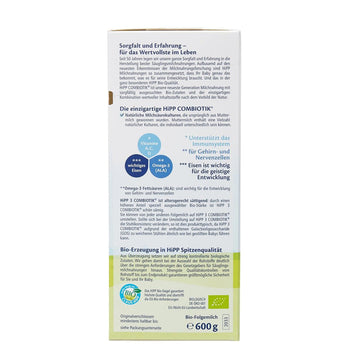When it comes to feeding their babies, parents are often faced with a myriad of choices and concerns. One of the most debated topics is whether European infant formula is safer than its American counterparts. This question has gained traction in recent years, especially among parents who are increasingly cautious about what they feed their infants. In this blog post, we will delve into the differences between European and American infant formulas, examine safety standards, and discuss whether European formula is indeed a safer option.
Understanding Infant Formula Regulations
European Standards
European infant formulas are regulated by the European Food Safety Authority (EFSA), which imposes stringent guidelines on the ingredients and nutritional content of these products. The EFSA mandates that all infant formulas must meet specific nutritional requirements to ensure they provide adequate nourishment for growing babies. Additionally, certain additives and ingredients that are permissible in American formulas are banned or restricted in Europe.
American Standards
In the United States, the Food and Drug Administration (FDA) oversees the regulation of infant formula. While the FDA also enforces strict guidelines to ensure safety and nutritional adequacy, there are notable differences in what is allowed in American formulas compared to their European counterparts. For instance, some synthetic nutrients permitted in U.S. formulas may not be allowed in Europe.
Key Differences Between European and American Formulas
Ingredients
One of the most significant differences between European and American infant formulas lies in their ingredient lists. European regulations prohibit certain additives such as carrageenan—a thickening agent linked to gastrointestinal issues—which can still be found in some U.S. formulas. Additionally, Europe has stricter rules regarding pesticide residues and genetically modified organisms (GMOs), making organic options more prevalent.
Nutritional Content
European infant formula often contains higher levels of certain nutrients like DHA (docosahexaenoic acid) and ARA (arachidonic acid), which are essential for brain development. The EFSA requires these fatty acids to be included at specific levels, whereas their inclusion is optional in U.S. formulas.
Sweeteners
Another notable difference is the type of sweeteners used. Many American formulas use corn syrup or other glucose syrups as a carbohydrate source, while European regulations favor lactose—the natural sugar found in breast milk—as the primary carbohydrate source.
Safety Concerns: Myths vs Facts
Myth: All Natural Means Safer
One common misconception is that because many European infant formulas claim to be more "natural," they must inherently be safer. While it's true that fewer synthetic ingredients can mean fewer potential allergens or irritants, it doesn't automatically guarantee superior safety or nutritional value.
Fact: Stricter Pesticide Regulations
One area where European infant formula may have an edge is its stricter pesticide regulations. Europe’s rigorous standards for organic certification mean that organic European formulas generally have lower pesticide residues compared to their U.S.-made counterparts.
Parental Preferences: Why Some Choose European Formula
Perceived Quality
Many parents believe that because Europe has stricter regulations regarding food safety and quality control, their infant formulas must be superior. This perception drives many parents to seek out imported brands despite higher costs.
Digestive Health
Some parents report that their babies experience fewer digestive issues when consuming European formula compared to American brands. This could be due to differences in ingredient composition or manufacturing processes.
Conclusion: Is It Really Safer?
The question of whether European infant formula is safer doesn't have a straightforward answer—it largely depends on individual needs and preferences:
- Regulations: Both Europe and America have stringent guidelines designed to ensure baby formula safety.
- Ingredients: While some parents prefer the ingredient restrictions imposed by Europe, others may find suitable options within U.S.-regulated products.
- Nutritional Needs: Each baby has unique dietary requirements; consulting with a pediatrician can help determine which formula best meets those needs.
Ultimately, both regions offer safe options for feeding your baby; it's up to you as a parent to decide which aligns best with your values and your baby's needs.
By understanding these differences and consulting healthcare professionals when necessary, you can make an informed decision about whether switching to a European infant formula might be beneficial for your child’s health and well-being.


























